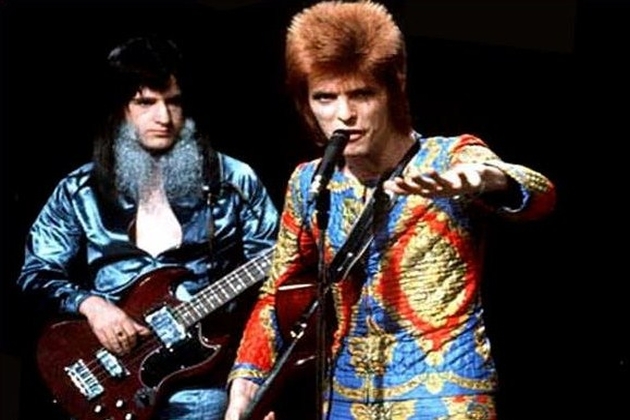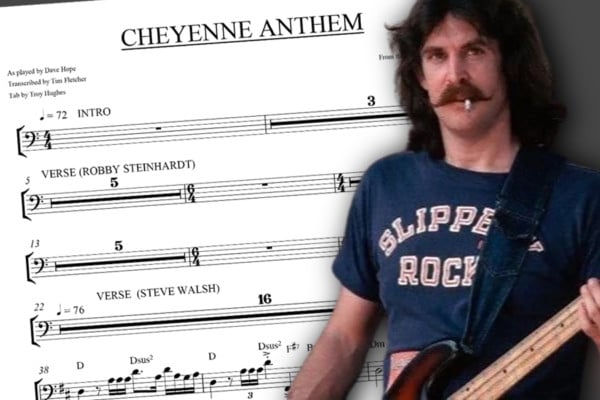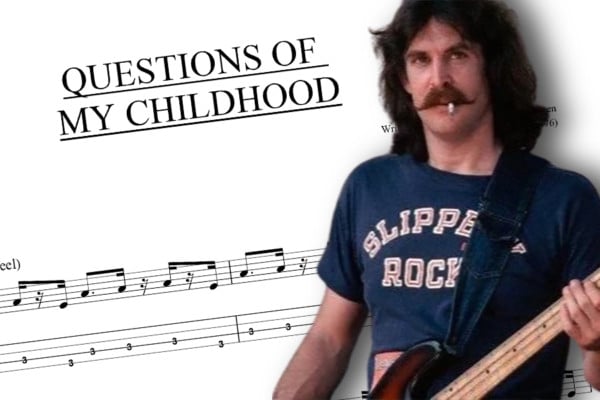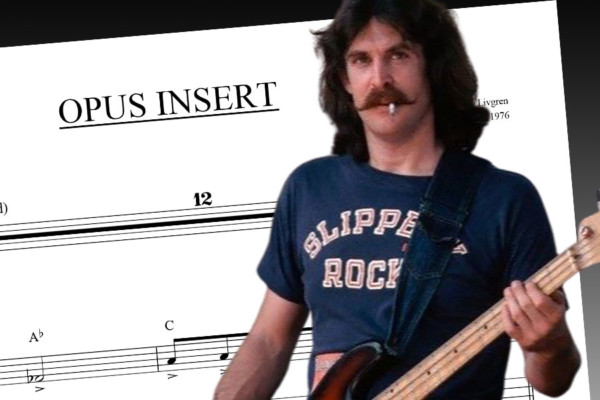Bass Transcription: Trevor Bolder’s Bass Line on “Changes” by David Bowie

Since 1963, David Bowie worked with many bands as both singer and instrumentalist, and he had released several unsuccessful singles under his own name before “Space Oddity” became his first substantial hit. The song reached number five in the UK in 1969. Bowie’s first two albums (both confusingly called David Bowie) had been recorded using session musicians, with the bass role taken by Dek Fearnley on the first album, and then shared by British session legend Herbie Flowers and producer Tony Visconti on the second. Bowie had been seen mainly as a solo artist up to this point, and he wished to organize a more stable and productive group of musicians for recording and gigging. Guitarist Mick Ronson and drummer John Cambridge (both former members of Hull band “The Rats”) were hired to bolster the band, which was initially christened “The Hype”, but they were also billed as “Harry The Butcher” and “David Bowie’s New Electric Band” for some live performances intended to give Bowie more exposure.
On returning to the studio, Bowie became displeased with Cambridge’s drumming and he was fired, to be replaced by Woody Woodmansey, who had also been a member of The Rats, and they began to work on Bowie’s third album, The Man Who Sold the World. The musicians returned to their former name The Hype, and during a hiatus from the album sessions, the band signed with Vertigo Records and started to record an album of their own. When Tony Visconti left to spend more time produce T. Rex (a band led by Bowie’s rival Marc Bolan), bassist Trevor Bolder, another Hull-based acquaintance of Ronson and Woodmansey, was recruited to play on live dates to promote the single “4th Hour of my Sleep”. Unfortunately, the single did not chart, and the album was never finished.
Bowie recalled the band to play on his next album, Hunky Dory (1971), and they were eventually christened “The Spiders from Mars” after the title of the next album, The Rise and Fall of Ziggy Stardust and the Spiders from Mars (1972). Bolder played on two further Bowie albums; Aladdin Sane (1973), and the covers album Pin Ups (1973). Bowie now began to look for new musical directions and he discarded his “Ziggy” image, dispensed with The Spiders and in 1974, he moved to the U.S. Bolder joined British heavy rock band, Uriah Heep, playing on four albums between 1976 and 1981, when he briefly joined Wishbone Ash, but he returned to Uriah Heep in 1983 where he continued to record and perform until his death in 2013.
Bolder was born in Hull, England, in 1950, beginning his musical life as a trumpet player, and from an early age, he played in local brass bands. As a teenager, Bolder had considered joining the Royal Marines band, but, inspired by The Beatles, took up the guitar. In 1964 he formed The Chicago Star Blues Band with his brother which played in the local R & B scene. He later took up the bass and played in other local bands such as Jelly Roll and Flesh. Bolder’s influences include Paul McCartney, John Entwistle, John McVie, and Jack Bruce. His brass playing also influenced his work; “I adapted the trumpet stuff to the bass, playing melodic parts…I never wanted to just be a bass player plonking away, I always wanted to have the edge to the sound and be able to play with a melodic feel.” Bolder often played a Gibson EB-3 bass with Bowie, but also played Fender Mustangs and Rickenbackers, and favored Fender Precision and D’Alegria basses during his time with Uriah Heep.
On to the transcription and analysis:
“Changes” begins with an unsettling piano and strings introduction based on a rising chromatic chord sequence (Cmaj7, Db6, Dm7, and Eb7). The band enters at bar 5 where the chords alternate between F7 and D major for another five bars. The bass-line swaps between root notes for the F7 chord and a rock ‘n’ roll type riff over the D that uses a classic major third/minor third idea, although the first time he plays it, he seems to play D D F# G rather than the bluesier D D F F# that the rest of the band are playing. This whole intro is harmonically ambiguous and only settles when the verse is reached where C major is firmly established as a key center.
The verse settles into a piano ballad feel, with Bolder emphasizing the roots, fifths, and octaves, but also includes some scale based (bar 11), and chromatic (e.g. bars 13, 16 and 17) end-of-bar links. The chorus uses a diatonically descending bass-line with a simple dotted crotchet/quaver rhythm. There is a brief change of time signature where a bar of 2/4 settles on a D major chord before returning to 4/4, and the F and G chords in the next few bars point back towards C major. At bar 35, in the chorus, the time signature changes to 3/4 time, and the harmony swaps between F major and C major with the inclusion of the Bb major chord. A return to the intro riff for four bars leads back to a second verse and chorus.
At bar 73, the feel changes to a cod-fifties ballad idea (indeed, the song was originally written as a ‘parody night-club song’), and Bolder starts to play the fifths (and sevenths at times) below the root but again utilizes chromatic bar-end links to add color to the bass line. After another chorus and tag, the outro re-states the verse chords, although the last three full bars use a chromatically descending flat-five substitution idea, and Bolder plays much more simply here, reflecting the more open feel behind Bowie’s sax solo.
Like many of Bowie’s songs, the changes of feel, harmony, and time signature create an unsettling musical landscape, but unlike some of the progressive rock bands that were contemporary to Bowie, these fluctuations of approach tend to blend well with each other and create an interesting rather than distracting whole. The song was written at a time when Bowie was experimenting with using a piano as a songwriting tool, and the increased range of chordal possibilities was perhaps the prompt for a broader range of musical ideas included in the songs. Bolder’s bass-line is tasteful and interesting, without detracting from the melody, and gives a solid foundation through the various changes in the song.
Follow along with the transcription and the video:


